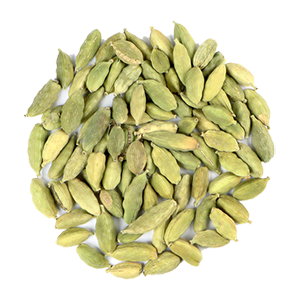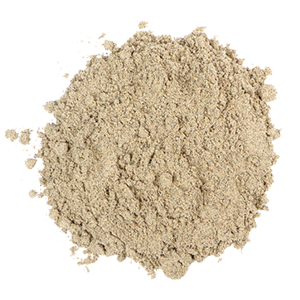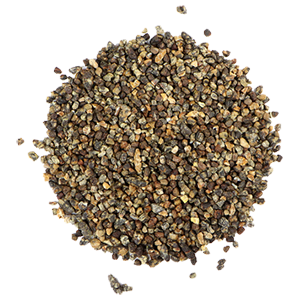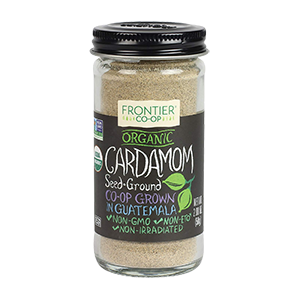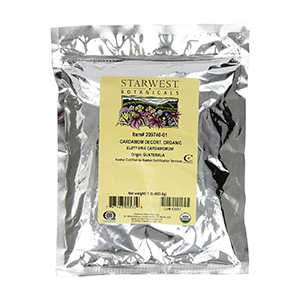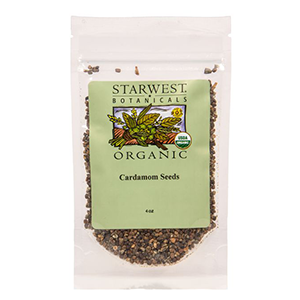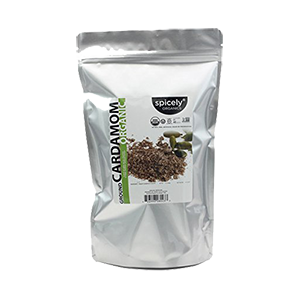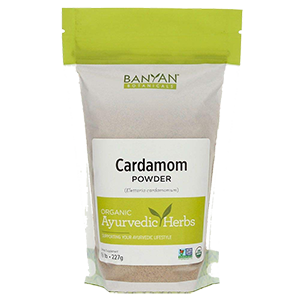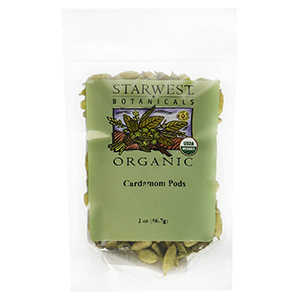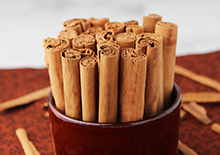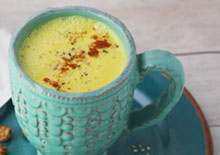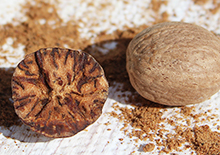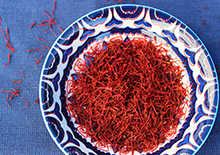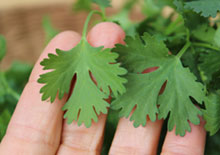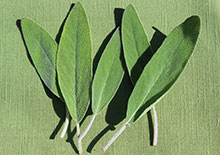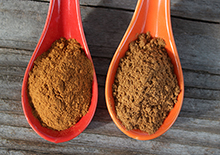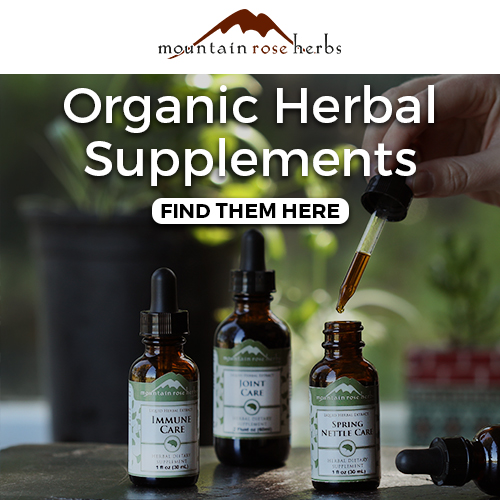- Home
- Herbs and Spices
- Cardamom Pods
Benefits of Cardamom Pods, Lesser-Known Uses of Elaichi
Intro | Why So Expensive? | Top 3 Benefits | Traditional Ways Utilized | How to Use | Precautions | Shop

Cardamom pods can come from two different species in the ginger family Zingiberaceae. One is known as green cardamom and the other as black cardamom. Green cardamom or Elettaria cardamomum is the type most widely used for its versatility as an herbal culinary spice. Usually when a recipe calls for "cardamom", it is typically referring to this variety.
Often referred to as the "queen of spices", Elettaria cardamomum is called elaichi in India or in Sanskrit goes by the name elā (एला) and was one of the popular commodities exchanged along historic spice trade routes. It is widely utilized in East Indian and Middle Eastern cuisine and is a famed ingredient in garam masala, chai tea, and many curry powder recipes.
Table of Contents
Intro | Why So Expensive? | Top 3 Benefits | Traditional Ways Utilized | How to Use | Precautions | Shop
Cardamom has a distinct aroma and can be generally described to have a potent flavor that is sweet, spicy and somewhat floral. Its taste is often likened to a combination of mint, lemon, eucalyptus, and ginger.
The pods themselves are the fruit of the flower and have a tasteless thin yellow-green outer skin. Within the pods are an average of 20 small dark seeds. This is where all the flavor is concentrated.
The powdered spice can be created from both the whole ground pods or the pod skin can be easily broken to extract the dark-brown seeds which can also be powdered.
The highest quality cardamom powder is made by freshly grinding or crushing the pods or seeds, rather than using a pre-ground powder that has lost a good portion of its flavor and medicinal qualities.
It is, therefore, more common for whole cardamom pods to be stored for such purposes to retain freshness. Sometimes whole seeds, usually called decorticated or hulled cardamom, are available from some suppliers and the next best option to the whole pods. If you do happen to enjoy the convenience of straight cardamom powder, most powders are derived from the ground seeds, not the green pods.
Why Are Cardamom Pods So Expensive?
Cardamom, by weight, is the third most valuable and expensive spice after saffron and vanilla. One of the reasons for this is because cardamom requires timely hand-harvesting when three-quarters ripe.
Also, the Elettaria cardamomum plant has a longer growing season with each pod slowly ripening after peak flowering over a six-month period. Each capsule or pod development, according to some sources analyzing Sri Lankan plants, takes between 110-120 days or four months after the full bloom stage.
While it is a tropical species native to the Indian subcontinent, where it is widely cultivated, as of 2020 Guatemala is the world's leading commercial producer of cardamom pods.

Top 3 Benefits of Cardamom Pods
1) Expectorant That Helps Eliminate Mucus
2) Antimicrobial and Antibacterial Volatile Oils
3) Supports Healthy Digestion or Digestive Fire
1) Expectorant That Helps Eliminate Mucus
Cardamom is a warming spice, expectorant and a mild herbal stimulant that helps to increase circulation and encourage clear respiratory pathways.
In Ayurveda, it is said to promote the elimination of excess Kapha or mucus buildup, especially in the stomach and lungs. A cup of cardamom tea can be a useful household herbal ally for reducing phlegm, relieving congestion in the chest, and can help to awaken the senses.
In some scientific research, cardamom supplementation given to mice was identified to have a positive outcome on memory and may possibly enhance neurotransmitter activity.
In the book Yoga of Herbs, An Ayurvedic Guide to Herbal Medicine, it
states that cardamom "stimulates the mind and heart and gives clarity
and joy."
The authors also give reference to its popular use in coffee and milk, reporting that it neutralizes milk's mucus forming properties and detoxifies caffeine. Cardamom is a popular tasty flavoring used in Arabian coffee and is also believed to reduce its acidity.
2) Antimicrobial and Antibacterial Volatile Oils
Cardamom pods and the seeds they contain are known for their high amounts of volatile oils. These are the active medicinal components of the spice that retain their highest potency when freshly ground and not heated to a boiling temperature.
The oil in the seeds is made up of a combination of terpenes, esters, flavonoids, and other compounds. Some of the major oils in cardamom include α-terpineol, eucalyptol, pinene, menthone, borneol, limonene, and myrcene.
The terpenes TERPINEOL and EUCALYPTOL (also called cineole or 1,8-cineole) are the main ones responsible for its strong fragrance and potential therapeutic influence. Eucalyptol is also found in other plants and herbs like eucalyptus, bay leaf, tea tree, rosemary, and sage.
These volatile oils are the constituents in cardamom well-known for their antimicrobial properties that can inhibit the growth of harmful bacteria and fungi.
In one study, cardamom extracts were identified to inhibit the pathogenic Candida albicans species. Likewise, in other research cardamom pods and seed extracts, via their antibacterial and anti-inflammatory attributes were shown to offer potential for periodontal infections.
This feature also coincides with cardamom seeds traditional use as a breath freshener to reduce halitosis or "bad breath." One or two tiny seeds are often chewed on after a meal for this effect. The eucalyptol is one of the main antiseptics known to kill mouth bacteria. This is also the primary substance found in eucalyptus oil, commonly used for dental hygiene.
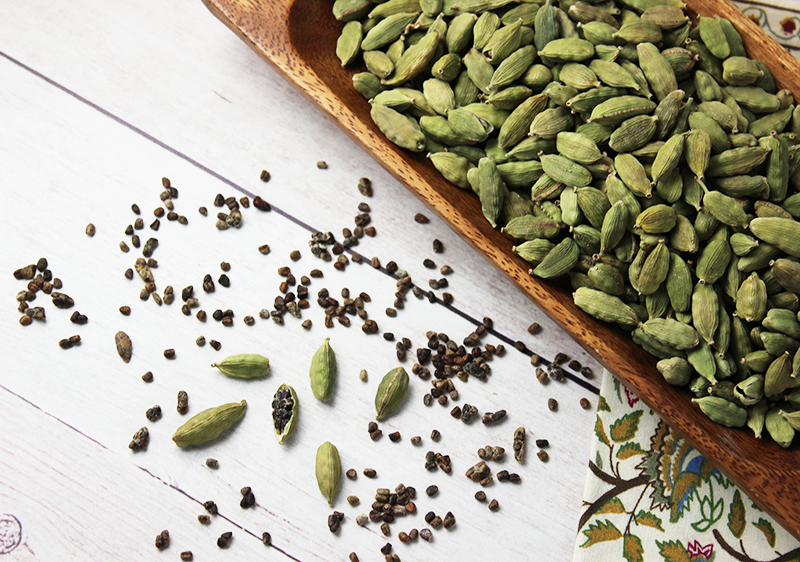

3) Supports Healthy Digestion and "Digestive Fire"
Good digestion of the foods we consume is at the root of optimal nutrition and ultimate overall health.
In Ayurveda, herbs and spices like cardamom are considered digestive spices that can be used to encourage proper digestion and assimilation of food nutrients as well as make heavier foods easier to digest. These herbs stimulate digestive juices and increase Agni or "digestive fire." Along with cardamom, others may include ginger, cumin, clove and cinnamon.
The
volatile oil compounds in cardamom, in particular, have strong carminative and antispasmodic
actions that can be helpful for nausea, bloating, belching, or
flatulence.
Cardamom pods, seeds or powder infused into hot water or warm milk is a classic Ayurvedic preparation for indigestion. Standard tea recipes usually call for about 2-4 crushed cardamom pods for every cup of water. Or, roughly about 1/4 - 1/2 teaspoon of powder.
It can likewise be incorporated into digestive bitter
formulas to increase the effectiveness of other herbs traditionally used
such as fennel, burdock root, dandelion root,
and leaf. Digestive bitters are typically consumed in small amounts
before meals to increase appetite and activate digestive processes.
Because of cardamom's use as a digestive aid, it is often recommended as a supplemental spice to include on a weight loss protocol.
Cardamom seeds are a top ingredient, along with amla and ashwagandha, used in the classic jam recipe called Chyavanprash, a formula that also helps to activate metabolism and digestive fire as well as boost immune functions.
Some Traditional Ways Cardamom is Utilized
- Used in coffee, tea or warm milk.
- Incorporated into curry powders, chai recipes, and garam marsala.
- Frequent addition to numerous sweet dessert foods worldwide.
- Sometimes used as sausage spice ingredient.
- Used in Scandinavian pastry dough, baked goods, and savory dishes.
- Seeds or pods are chewed as a breath freshener.
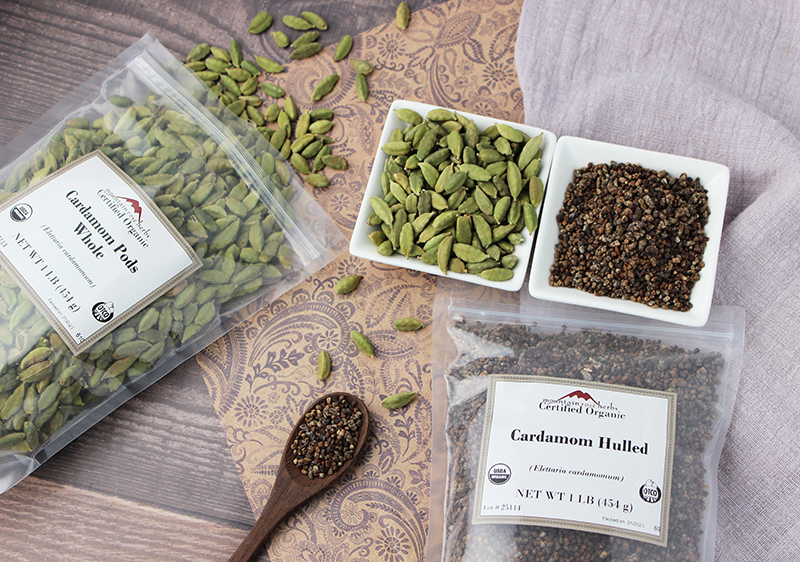 This website is an affiliate of Mountain Rose Herbs. However, opinions expressed here are completely our own.
This website is an affiliate of Mountain Rose Herbs. However, opinions expressed here are completely our own.How to Use
Cardamom pods can be crushed and or used whole in some recipes but are usually removed before serving. The pods are sometimes briefly dry roasted in some cultures to impart a smoky flavor.
Again, making fresh cardamom powder is the optimal way to retain its fragrance, flavor and medicinal aspects. Pre-ground powders are the next best option and can be more convenient to have on hand in your spice rack.
As always, we highly recommended choosing organically certified cardamom over conventionally grown selections.
Precautions:
Cardamom pods, seeds or powders should be not be used in large amounts or when excess heat is present. Always consult your health care provider before adding cardamom spice to the diet if you are pregnant, nursing, have a serious medical condition or are taking prescribed medications. Never use the essential oil of cardamom internally.
Shop Related Products (About Affiliates & Amazon Associate Paid Links)
Affiliate Disclaimer: This section contains affiliate product links. If you make a purchase through our recommended links, we receive a small commission at no additional cost to you. Thanks for the support.

